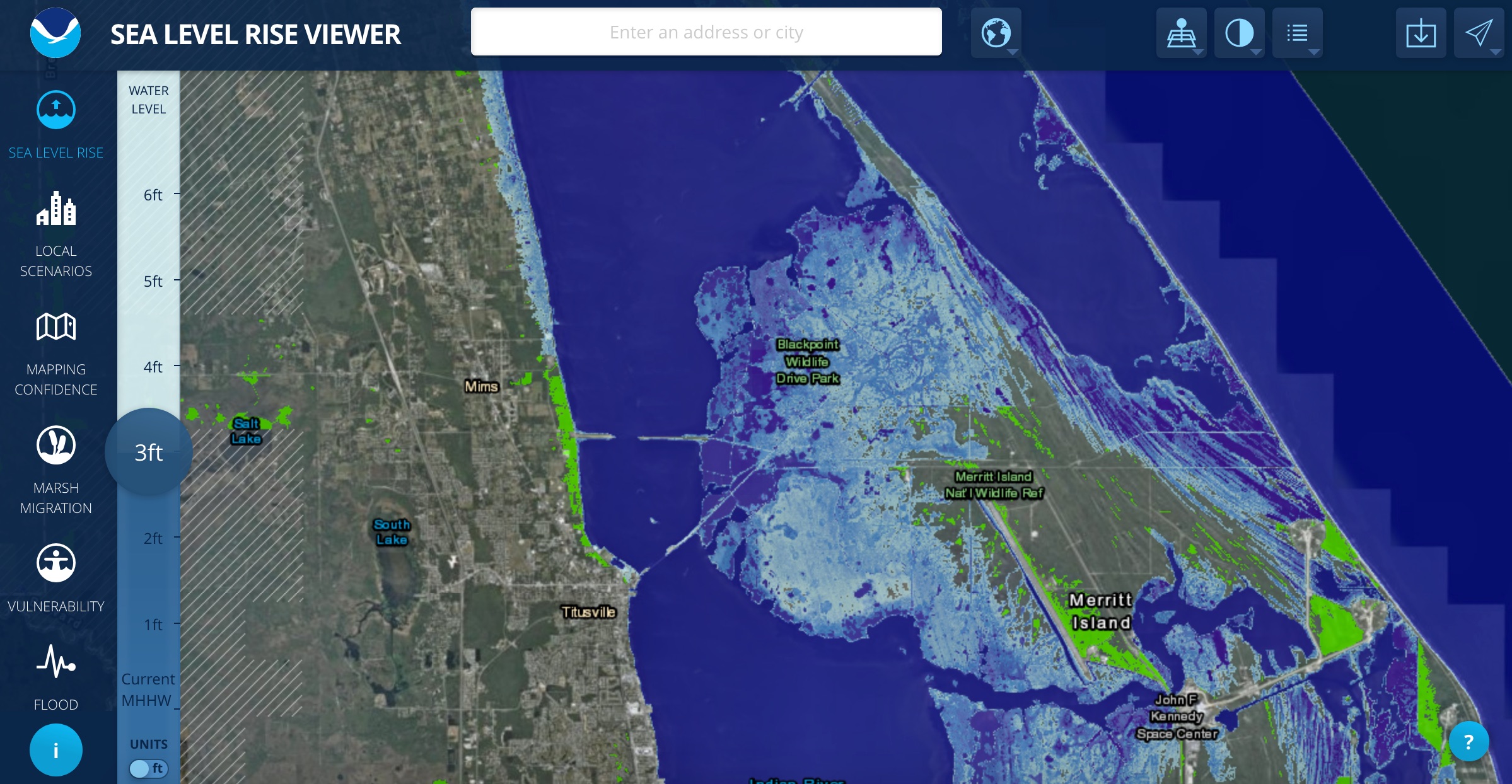23 April 2018
Building better tools for risk communication with user-centered design
Posted by Shane Hanlon
By Sonia Stephens
How can we build better tools to communicate about coastal risks? As a technical communicator, I’m interested in how we can make scientific information more understandable and meaningful for different audiences. One of the things I study is how interactive risk visualization tools are made. That is, I study how these tools are developed: who does the design and development, what choices they make about design and content, and how audiences or end-users are (or aren’t) involved throughout the process.

Projected effects of 3 feet of flooding at Kennedy Space Center. Image from NOAA’s Sea Level Rise Viewer.
Interactive visualization tools can be an effective way to share risk information. They are visually compelling, like this map of projected sea level rise at Kennedy Space Center. However, different audiences may want different functions, data, or levels of explanation from these tools. When developers take a user-centered design (UCD) approach, they can make these tools more effective.

Audiences can be involved at several points in the development of interactive visualization tools. Image by Sonia Stephens.
So how does UCD work? It’s a process that involves audience members at different stages of the development process: initial design consultation, usability testing of prototypes, or even after project roll-out. UCD tries to put audience needs first, and involve audiences at each of these stages. To find out about how this is being done in practice, I recently interviewed seven people who developed tools for federal, state, and academic organizations, and who ranged from technical specialists to outreach professionals. What I found was that there is a whole range of audience involvement in these projects: small projects usually involved audiences at the end, while larger projects generally involved audiences throughout the process.
So what did the developers actually think about working with audiences? They saw quite a range of potential benefits: making tools more usable, gaining a better understanding audience needs, and building a sense of engagement within the coastal community. Of course there were challenges, too – the main one being the time and effort it takes to involve users in design. But all of the people I spoke to felt the effort was worth it.
If you will be developing an interactive risk visualization tool, I’d encourage you to look at how UCD can help you see how to involve audiences in your project (more here). Here are some final pieces of advice the people I spoke to wanted to share with other developers and communicators:
- Involve audiences early in the project and throughout development.
- Be prepared to:
- Articulate the scope of the project to audiences (they may want things you can’t provide)
- Make a wide array of changes to tools, including data, design, and wording
- Have your preconceptions about your audience and your initial design challenged
– Sonia Stephens is an assistant professor of technical communication in the English Department and Texts and Technology Program at the University of Central Florida.


 The Plainspoken Scientist is the science communication blog of AGU’s Sharing Science program. With this blog, we wish to showcase creative and effective science communication via multiple mediums and modes.
The Plainspoken Scientist is the science communication blog of AGU’s Sharing Science program. With this blog, we wish to showcase creative and effective science communication via multiple mediums and modes.